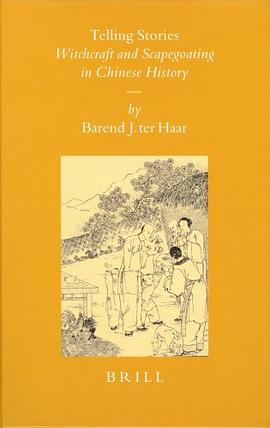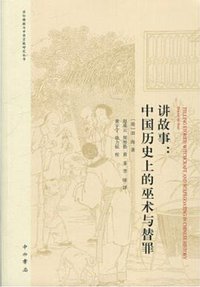Telling Stories
豆瓣
Witchcraft and Scapegoating in Chinese History
Barend J. ter Haar
简介
This book analyzes the role of oral stories in Chinese witch-hunts. Successive chapters deal with the implications of Chinese versions of the Little Red Riding Hood story; the use of parts of the adult human body, children and foetuses, to draw out their life-force; attacks by mysterious creatures, causing open wounds, suffocation, the loss of hair and the like; the presence of a Drought Demon in the corpses of recently deceased women; and finally the emperor forcibly recruiting unmarried women for his harem. Of interest to historians and anthropologists working on oral traditions, folklore and witch-hunts (also from a comparative perspective), but also to those working on anti-Christian movements and the intersection of popular fears and political history in China.
contents
List of Tables p. VII
List of Illustrations p. VII
List of Maps p. VII
Preface p. VIII
Chapter 1 Introduction p. 1
1.1 The Topic of Investigation p. 9
1.2 The Conceptual Framework p. 15
1.3 Contents and Structure of this Book p. 28
Chapter 2 The Spotted Barbarian and Auntie Old Tiger p. 37
2.1 Warning Children about the Bogeyman p. 39
2.2 Beating the Yehu p. 45
2.3 Auntie Old Tiger: Historical Evidence p. 52
2.4 Auntie Old Tiger: The Oral Tale of the Twentieth Century p. 71
2.5 A Comparative Approach p. 79
2.6 Concluding Remarks p. 88
Chapter 3 Organ-snatching and Foetus-theft p. 92
3.1 Camphor and Willow Deities p. 95
3.2 Early Rumours about Organ-snatching and Kidnapping p. 106
3.3 Indigenous Scapegoats p. 116
3.4 Random Rumours and Exorcist Killings p. 134
3.5 Concluding Remarks p. 151
Chapter 4 Westerners as Scapegoats p. 154
4.1 The Importance of Oral Culture p. 157
4.2 The Yangzi River Valley Riots of 1891 p. 176
4.2.1 The Riots: Scapegoating Westerners p. 178
4.2.2 The Role of the Gathering of Brothers and Elders p. 186
4.3 Concluding Observations p. 190
Appendix 1 The Gathering of Brothers and Elders p. 196
Chapter 5 Demon Birds and Vicious Foxes p. 202
5.1 Obnoxious Foxes, Fearsome Sha-visits and Demonic Attacks p. 204
5.2 Scares Caused by Dark Afflictions or Queue-cutters p. 217
5.2.1 Song Rumours of "Flying Hats" and "Dark Miasma" p. 217
5.2.2 Dark Afflictions: Ming Developments p. 221
5.2.3 Chicken-attacks and Mixed Scares: Qing Developments p. 249
5.3 On the Spread of Stories p. 257
Chapter 6 Wicked Women and Evil Emperors p. 282
6.1 The Drought Demon p. 284
6.2 The Fear of Imperial Harem Recruitment p. 299
6.3 Concluding Observations p. 319
Chapter 7 Communication and Stigmatisation p. 322
7.1 The Power of Oral Communication p. 323
7.2 Stories and Stigmatisation p. 336
7.3 Why Scares Happened p. 342
7.4 Telling Stories and Collective Action p. 345
Bibliography p. 349
Index p. 373
